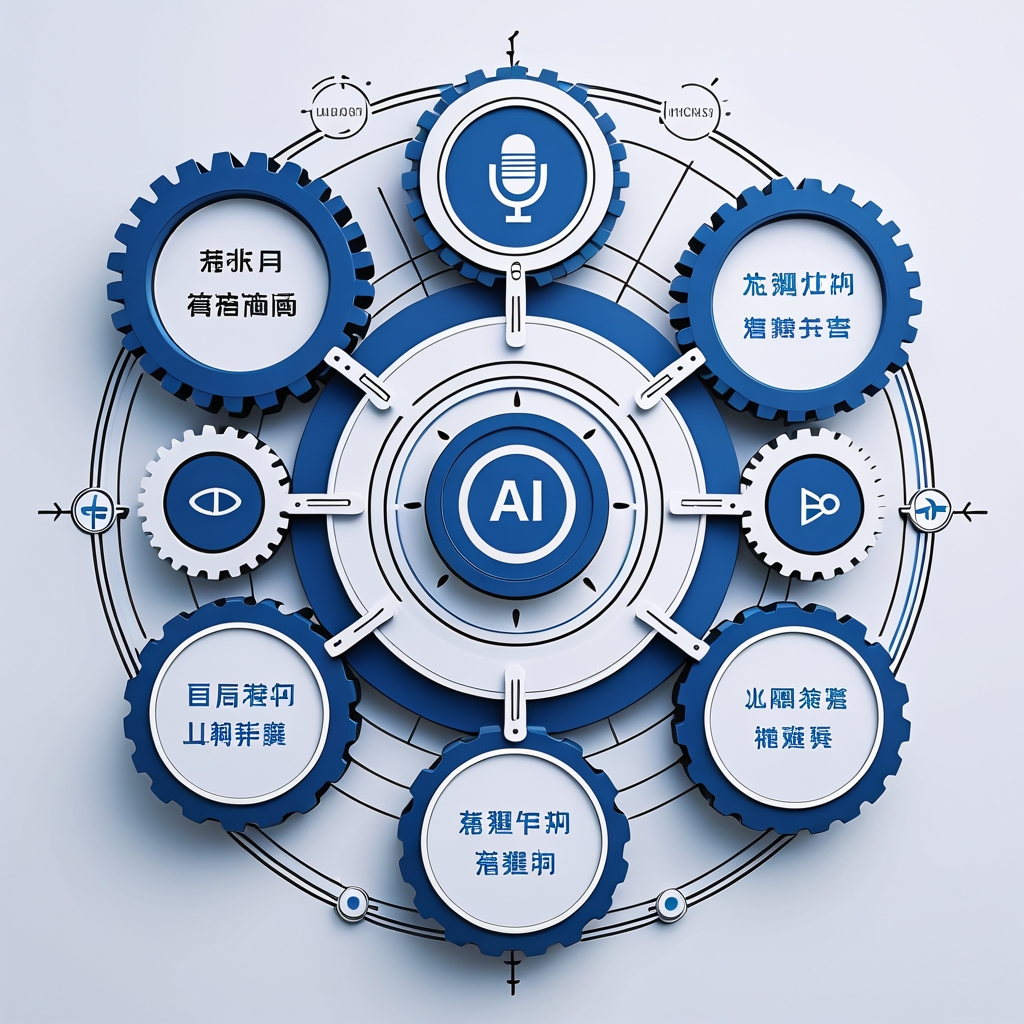Introduction: Breaking Down Language Barriers in Enterprise AI
Picture this: A global enterprise receives customer inquiries in a dozen languages, 24/7. The traditional approach? Route each query to a specialized team based on language, hope for availability, and accept the inevitable delays. This scenario plays out thousands of times daily across businesses with international operations, creating friction, frustration, and fragmented customer experiences.
But what if your retrieval-augmented generation (RAG) system could not only understand and retrieve information in multiple languages but actually respond with a natural, human-like voice in the customer’s preferred language? And what if this could happen in real-time, without the need for human intervention?
The challenge isn’t just technical—it’s transformative. Companies that solve this puzzle gain an immediate competitive advantage in global markets where personalized, responsive service determines loyalty. Yet most enterprises struggle with multilingual implementations because they approach it as a translation problem rather than an architectural one.
In this technical deep dive, I’ll show you how to build a multilingual voice-enabled RAG system that leverages ElevenLabs’ voice cloning capabilities integrated with a robust knowledge retrieval architecture. By the end, you’ll understand the architectural decisions, implementation details, and optimization techniques that make this possible—and why standard approaches often fall short.
Ready to transform how your organization bridges language barriers? Let’s dig in.
Understanding the Multilingual RAG Architecture
Before diving into implementation, let’s understand what makes multilingual RAG systems different from standard implementations.
The Limits of Traditional RAG in Multilingual Contexts
Conventional RAG systems follow a linear pattern:
- Take a user query
- Retrieve relevant documents
- Generate a response using the retrieved context
When adding multilingual support, most implementations simply insert translation layers at each step. This approach creates several problems:
- Cross-language semantic drift: Translation before embedding reduces retrieval accuracy
- Response latency: Sequential processing adds noticeable delays
- Cultural context loss: Direct translations miss important cultural nuances
- Voice inconsistency: Text-to-speech added as an afterthought creates robotic experiences
The Cross-Embedding Approach
Instead of translating and then embedding, our architecture uses cross-lingual embeddings that maintain semantic meaning across languages. This is achieved through a carefully designed pipeline:
# Example of cross-lingual embedding implementation
from sentence_transformers import SentenceTransformer
# This model specifically handles cross-lingual semantic relationships
model = SentenceTransformer('paraphrase-multilingual-mpnet-base-v2')
# Same semantic meaning, different languages
spanish_query = "¿Cómo puedo cambiar mi plan de suscripción?"
english_doc = "This document explains how to modify your subscription plan."
# Embeddings will be close in vector space despite language difference
spanish_embedding = model.encode(spanish_query)
english_embedding = model.encode(english_doc)
This approach allows us to find relevant documents across language boundaries without translation as an intermediary step.
Building Your Multilingual Voice RAG System
1. Knowledge Base Preparation
The foundation of any effective RAG system is a well-structured knowledge base. For multilingual systems, we need to consider both document language and metadata.
# Sample knowledge base entry with language metadata
document = {
"content": "Para cambiar su plan, vaya a la configuración de la cuenta...",
"metadata": {
"language": "es",
"topic": "subscription_management",
"region": "latin_america",
"last_updated": "2025-04-15"
}
}
This metadata becomes crucial for filtering and context-aware retrieval. Rather than maintaining separate vector stores for each language, we’ll use a unified approach with language as a filter parameter.
2. Setting Up Cross-Lingual Embeddings
Select an embedding model that inherently supports cross-lingual semantic matching. Options include:
- SBERT’s multilingual models
- OpenAI’s multilingual embedding models
- Enterprise-specific fine-tuned embeddings
Here’s an implementation using LangChain:
from langchain_community.embeddings import HuggingFaceEmbeddings
from langchain_community.vectorstores import Chroma
# Choose a multilingual embedding model
embeddings = HuggingFaceEmbeddings(model_name="paraphrase-multilingual-mpnet-base-v2")
# Create vector store with documents from multiple languages
vectorstore = Chroma.from_documents(
multilingual_documents,
embeddings,
persist_directory="./chroma_multilingual_db"
)
3. Language Detection and Query Processing
To respond in the correct language, we first need to detect the user’s language:
from langdetect import detect
def process_query(query_text, voice_response=True):
# Detect language of the incoming query
detected_language = detect(query_text)
# Store for later response generation
user_language = detected_language
# Execute retrieval in language-agnostic way
relevant_docs = vectorstore.similarity_search(
query_text,
k=5,
filter={"region": user_region} # Can filter by region without language constraint
)
return relevant_docs, user_language
4. Integrating ElevenLabs for Voice Responses
This is where the magic happens. Instead of treating voice as an afterthought, we’ll integrate ElevenLabs’ voice cloning to create a consistent, natural voice experience across languages.
First, let’s set up the ElevenLabs client:
import elevenlabs
# Initialize with your API key
elevenlabs.set_api_key("YOUR_API_KEY")
# For enterprise deployments, consider using API key rotation and secure storage
Next, let’s create a mapping of languages to voice clones. Ideally, you’ll create voice clones that can handle multiple languages with appropriate accents:
# Map of language codes to voice IDs
language_voice_map = {
"en": "voice_id_for_english",
"es": "voice_id_for_spanish",
"fr": "voice_id_for_french",
"de": "voice_id_for_german",
# Add more languages as needed
}
# For enterprise use, consider creating a single voice clone trained on multiple languages
# This creates consistency in brand voice across languages
5. Response Generation and Voice Synthesis
Now we’ll combine the retrieved documents, user’s language, and voice generation:
from langchain_openai import ChatOpenAI
def generate_voice_response(query, retrieved_docs, user_language):
# Context assembly
context = "\n\n".join([doc.page_content for doc in retrieved_docs])
# Configure LLM to respond in user's language
llm = ChatOpenAI(temperature=0.3)
# Prompt engineering to ensure response in correct language
prompt = f"""Based on the following information, answer the user's question in {user_language}.
Context information:
{context}
User question: {query}
Provide a concise, helpful answer in {user_language}."""
# Generate text response
text_response = llm.invoke(prompt).content
# Select appropriate voice based on detected language
voice_id = language_voice_map.get(user_language, language_voice_map["en"])
# Generate audio with ElevenLabs
audio = elevenlabs.generate(
text=text_response,
voice=voice_id,
model="eleven_multilingual_v2" # Specialized for multilingual content
)
return {
"text_response": text_response,
"audio_response": audio,
"detected_language": user_language
}
Optimizing for Enterprise Scale
Building this system for enterprise scale requires careful consideration of several factors:
Latency Management
Multilingual voice RAG systems can face increased latency due to the additional processing. Here’s how to optimize:
- Parallel processing: Execute embedding generation and language detection concurrently
- Caching frequent queries: Implement a response cache for common questions
- Streaming responses: Use ElevenLabs’ streaming API to start playback before full generation is complete
# Example of streaming implementation
def stream_voice_response(text_response, user_language):
voice_id = language_voice_map.get(user_language, language_voice_map["en"])
# Stream audio as it's generated
audio_stream = elevenlabs.generate(
text=text_response,
voice=voice_id,
model="eleven_multilingual_v2",
stream=True
)
# In a real implementation, you'd pipe this to your audio output system
return audio_stream
Knowledge Management
To maintain accuracy across languages:
- Implement regular reindexing of your knowledge base
- Set up automated quality checks for cross-lingual retrievals
- Use feedback loops to improve retrieval quality over time
Security and Compliance
When implementing voice systems that handle customer data across borders, consider:
- Data residency requirements for different regions
- Voice data retention policies
- User consent mechanisms for voice processing
# Example compliance check
def check_compliance(user_region, user_language):
compliance_rules = {
"EU": {
"data_retention_days": 30,
"requires_explicit_consent": True,
"allowed_storage_regions": ["eu-west-1", "eu-central-1"]
},
# Other regions
}
# Apply appropriate compliance settings based on user location
return compliance_rules.get(user_region, default_compliance_rules)
Implementing Agent Transfer with ElevenLabs
One of the newest features of ElevenLabs is Agent Transfer, which allows you to seamlessly transfer conversations between AI agents when specific conditions are met. This is particularly valuable in multilingual settings where different agents might specialize in different languages or regional knowledge.
Here’s how to implement it with our multilingual RAG system:
def setup_agent_transfer(primary_agent_id):
# Define transfer conditions
transfer_conditions = {
"technical_support": "support_agent_id",
"billing_inquiry": "billing_agent_id",
"language_specific": {
"ja": "japanese_specialist_agent_id",
"de": "german_specialist_agent_id"
}
}
# Configure the agent transfer tool
agent_transfer_tool = {
"type": "agent_transfer",
"conditions": [
{
"when": "intent == 'technical_support' and confidence > 0.8",
"transfer_to": transfer_conditions["technical_support"]
},
{
"when": "detected_language == 'ja' and confidence > 0.9",
"transfer_to": transfer_conditions["language_specific"]["ja"]
}
]
}
# Register tool with ElevenLabs agent
# Note: This is a conceptual implementation
elevenlabs.agents.register_tool(primary_agent_id, agent_transfer_tool)
return "Agent transfer configuration complete"
This functionality allows you to build specialized agents for different languages or domains while maintaining a seamless user experience.
Testing Your Multilingual RAG Implementation
Thorough testing is essential for multilingual systems. Implement these testing procedures:
- Cross-lingual retrieval accuracy: Test queries in one language retrieving relevant documents in another
- Voice naturalness assessments: Gather feedback on voice quality across languages
- End-to-end latency testing: Measure full response time from query to audio completion
# Example test function for cross-lingual retrieval
def test_cross_lingual_retrieval():
test_queries = {
"en": "How do I reset my password?",
"es": "¿Cómo puedo restablecer mi contraseña?",
"fr": "Comment puis-je réinitialiser mon mot de passe?"
}
expected_doc_id = "password_reset_procedure"
results = {}
for lang, query in test_queries.items():
docs = vectorstore.similarity_search(query, k=5)
# Check if expected document is in results
found = any(expected_doc_id in doc.metadata.get("id", "") for doc in docs)
results[lang] = found
return results
Conclusion: The Future of Multilingual Voice RAG
As we’ve explored, building a multilingual voice-enabled RAG system requires careful architecture, the right tools, and a thoughtful implementation approach. By leveraging ElevenLabs’ voice cloning technology with cross-lingual embeddings and proper language handling, you can create an enterprise-grade system that truly breaks down language barriers.
This approach not only improves customer experience but also streamlines operations by reducing the need for specialized language teams. As the Retrieval Augmented Generation market continues its explosive growth—projected to reach USD 74.5 billion by 2034 with a 49.9% CAGR—multilingual capabilities will become a key differentiator for enterprises operating globally.
Imagine returning to our opening scenario: that global enterprise now handles inquiries across all languages simultaneously, with consistent voice interactions that feel natural to each customer. No routing delays, no fragmented experience—just seamless, intelligent service that sounds like a native speaker every time.
That’s not just a technical achievement—it’s a transformative business advantage in our increasingly connected world.
Next Steps
Ready to implement your own multilingual voice RAG system?
- Start by evaluating your current knowledge base structure and embedding approach
- Experiment with ElevenLabs’ voice cloning capabilities for your target languages
- Implement a proof-of-concept following the architecture outlined above
The tools and techniques described here provide a solid foundation, but remember that continuous optimization based on user feedback will be key to long-term success.




